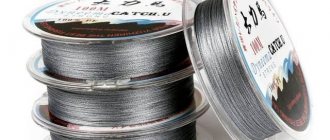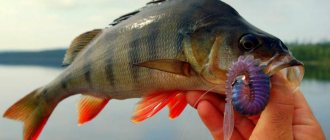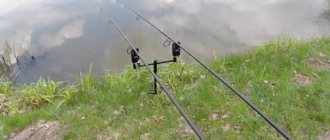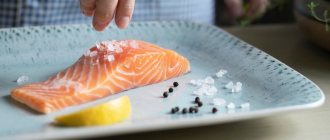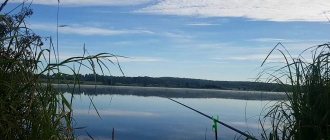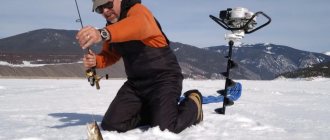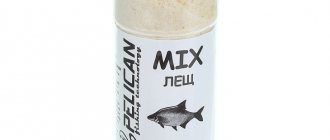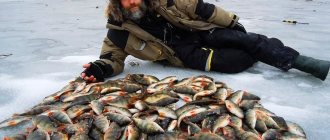Fishing is a fascinating process, but it yields a catch only if certain conditions are met. Each lover of this pastime, as he gains his own experience, accumulates the secrets of catchy “hunting” for certain types of fish. Some interesting fishing tricks that are useful to every beginner sometimes become known not only to their owner, but turn into the property of strangers. This newfound wisdom is worth using on occasion.
Little tricks and secrets for fishing: ensuring a winter catch
Many experienced fishermen know: sometimes in winter there is a high chance of being left without a catch if the fish in their favorite body of water lack oxygen. This is not difficult to determine - then usually fry, or even larger specimens, constantly slip into the drilled holes, as if trying to breathe. It is necessary to avoid winter fishing in reservoirs where there are no inflowing or outflowing water streams. There must be bottom springs there. Lakes or ponds that are silty or densely overgrown with aquatic vegetation are not suitable. A prolonged thaw or light cold, down to -3...-5 Celsius, are favorable for a successful catch. In the first case, bream or roach will be readily caught, in the second - perch.
Tips from experienced fishermen 100
DIY barometer
Any fisherman is interested in knowing what the weather will be like tomorrow when fishing, and what to do if there is no barometer at hand. Of course, there is the Internet and there you can always find out the weather forecast in your region, but the question is - how accurate is this forecast? There is a simple way out of the situation; you can make a barometer with your own hands, especially since it is not at all difficult. To make a barometer you will need:
- half-liter bottle, preferably made of light glass
- distilled water and any dye
- glass tube
- plasticine, paraffin or wax
Fill the bottle 1/3 full with distilled water. The water can be tinted with dye in order to better see the level. Next, a glass tube is inserted into the bottle, with a diameter less than the diameter of the neck, about half. The tube should not reach the bottom 3-4 cm and stick out from the neck, approximately the same. Now we cover the neck of the tube with wax, paraffin or plasticine so that it is exactly in the center.
That's it, your home barometer is ready, all you have to do is learn how to use it. Over the course of a month, the barometer will adjust itself. It should be stored in a room with a constant temperature, in the shade, so that rays of light do not fall on it. Determining pressure using this device is very simple.
If the level in the tube is lower than the level in the bottle, this means that the pressure is high (comparatively) and the weather will be good, and if the water level in the tube is higher than the level in the bottle itself, then the pressure will drop and the weather will deteriorate. You can make marks on the bottle for greater convenience. After a little time, you will get used to it and will know exactly the weather in your area.
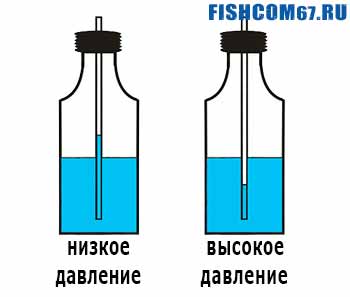
Homemade barometer readings
DIY float
To successfully catch perch, rudd, and roach in fairly overgrown ponds (river backwaters, reservoirs), it is best to use a spherical float with a sinker mounted inside. It absolutely eliminates snags on aquatic vegetation and makes it possible to precisely throw the equipment into the “window.”
At the same time, the fish is not afraid and confidently rushes to the bait. Making such a float is quite simple: a spherical blank is machined from a cube of hard foam plastic (about 3x3x3 cm) and brought to the desired shape with fine sandpaper. A through hole is drilled in the center of the workpiece for a hollow tube through which the fishing line will be pulled.
In the lower part of the float, using a drill or a file, a cavity is drilled or ground out for a lead weight (its weight is selected so that the float is recessed by two-thirds), and it is advisable to place the weight on glue.
The float must be painted in some dark color, which makes it almost invisible on the water and thus does not alert the fish. The fishing line is passed through a through tube and a swivel with a rubber or plastic stopper is tied at the exit. Next, a leash no longer than 50 cm is attached to the swivel; if you make the leash longer, the number of empty bites will greatly increase. That's all the gear is ready!
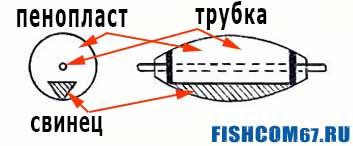
Homemade float for fishing in overgrown ponds
How to feed fish
Bait is good only during fishing and is used only when the bite weakens. In this case, you must always remember the recommendation of L.P. Sabaneev:
Use bait in the optimal quantity, taking into account the fishing location, in strict accordance with the bait and attachment. When fishing in a slow current, you should also give bait in smaller quantities than in a fast current. When fishing on a silty bottom, you need to give more bait than on a clayey, sandy or gravel bottom. The fragrant toasted vegetable oil is very effective.
Also effective is the use of “blende” - this is sifted sand, fried in a frying pan with drops of vegetable oil or pieces of fresh cake. It is good to use bait in clay balls in medium and strong currents. You can also use a glass jar, placing small live bait in it. In this case, the vessel is carefully lowered into the fishing areas, leaving buoys on the surface. Remember - excessive bait can distract the fish from the fishing area.
How to store bloodworms
Of all the tested methods for long-term storage of bloodworms, storing it in mashed potatoes is considered the most reliable. For 50-70 gr. For bloodworm larvae, you will need one medium-sized potato. It is peeled and grated on a coarse grater. The resulting small and large chips are removed from excess starch liquid by squeezing.
The squeezes are ready. They are laid out in a thin layer on a clean scrap of material, bloodworms are poured on top, which are covered with the same layer of marc. The cuttings should be rolled up into a bag, wrapped in damp newspaper and placed in a shady, cool place. With this storage, bloodworms remain fresh for up to a month. As a more progressive and modern option for storing bloodworms.
The top of a potato of the required size (the size depends on the number of bloodworms that need to be preserved) is cut off and the core of more than half of the body is scraped out using improvised means. As a result, you get something like an empty vessel, where the bloodworm larvae are laid out, and the upper part is closed like a lid, which is secured with a toothpick (as one of the options).
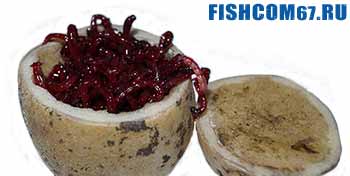
Bloodworms in a potato tuber
- The following tips
Fishing and video: useful tricks for preserving your catch
If you are trying to figure out fishing tips for summer fishing, you can find videos on the topic of interest. One of the most pressing issues for this period of the year is the safety of the catch when the weather is hot. Then you should stock up on salt. It is recommended to place the caught prey in a capacious container with a flat bottom, thickly sprinkling each layer with the mentioned spice. Then be sure to cover the vessel with branches or a large piece of cardboard and place it in a pre-dug hole of suitable size. More details about this fishing subtlety, including further disposal of excess salt, are described here.

Tips on the habits and preferences of fish
Color and light for fish
In water, fish distinguish colors well. Its red color is especially attractive, so fishermen tie a bunch of red threads on a hook when catching a predator. And for leucorrhoea, maggots are painted red.
Night light attracts catfish, roach, and burbot. Often, when fishing, fishermen specially light a fire on the shore. Carp, on the contrary, is afraid at night and moves away from the light.
The fish treats white hooks with caution. It is advisable to mask them with a nozzle - cover them completely, or not use them at all.
Weather for fish
When atmospheric pressure decreases, fish rise upward. It is worth catching it in the upper layers of water. When pressure increases, it stays at depth, closer to the bottom.
Steady atmospheric pressure, a slight western or southwestern wind, all other things being equal, can provide a bite and a good catch of fish.
The fish bite noticeably deteriorates when a thunderstorm approaches. Afterwards, especially with warm, rare rain, the bite is restored and even intensifies.
In extreme heat, the fish stays in cool water - under steep banks, deep cliffs, near springs.
When the water level is stable, the fish stick to feeding areas and bite well.
When the water decreases, the fish move away from the shore and deeper, and the bite weakens significantly or disappears completely. When the level normalizes, the fish calms down and the bite resumes.
The increase in water also worsens the bite. The fish scatter around newly flooded areas rich in food and show little interest in fishermen’s baits.
Little tricks for fishing: breeding maggots
These fleshy fly larvae are the favorite delicacy of many types of fish, so it is always worth having a supply of such bait. The following method is useful for growing maggots. First, boil the egg and remove the shell a little from the top. The product is placed outside until it begins to fade and thereby attract flies. They will certainly lay eggs, from which a short time later the future fishing bait will hatch. The remains of the egg will be enough for the worms to feed during cultivation, and the high sides of the shell will serve as an obstacle to crawling out.
How to preserve fish in the heat?
- After you have pulled out the fish, you should release it from the hook. The hook should be removed carefully, without putting pressure on the belly of the fish. The less damage the catch receives, the longer it will remain fresh. If the fish is badly damaged, there is no need to throw it to another catch, but rather put it in a separate place.
- Based on the first rule, you should periodically monitor the condition of the fish. Half-dead or completely dead fish are isolated in a separate container.
- If fishing takes several days, the fish should be gutted immediately and preferably frozen.
- The use of a wicker cage, which is lowered into water, is encouraged. In this case, the device must be spacious so that the catch can float. A cramped and metal cage can damage the scales and body of the fish.
- The cage is selected with a fine mesh, into which the fish’s head will not fit. By sticking your head in there, the catch can simply suffocate.
- The container with the prey is placed in a dark place.
- Toothy fish should not be placed in a fabric container as they may escape. For predators, they use a kukan with a metal loop at the end, on which the fish is strung and left in the shade.
Fishing tips for summer fishing: ensuring a bite
Many secrets and tricks of fishing touch on the issue of improving the bite. To do this, use a variety of baits and fertilizers. If fishing occurs constantly in the same body of water, it makes sense to do the following. In a suitable place in the spring, drown spruce and other branches tied with ropes, and tie a couple of bricks to them for weight. Soon a lot of aquatic insects will accumulate on the structure, which will attract large potential prey. Approximate diagram
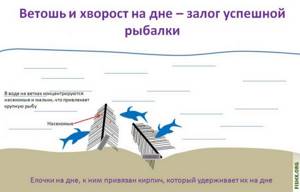
.

Simple tricks for winter fishing
Hello, winter fishing lovers! After a lull in January, fish begin to slowly become more active from the end of February - beginning of March. Along with perch and pike, pike perch, roach, ruff, and bream can also be caught on the fishing rod at this time.
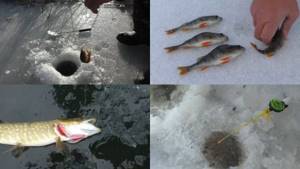
For those who are just beginning to discover the delights of ice fishing, we invite you to familiarize yourself with simple but relevant tips and tricks regarding the correct choice and arrangement of a fishing spot, as well as facilitating the fishing process itself.
I. Tricks regarding choosing a location for a hole and its arrangement
1. When choosing a fishing spot, the presence of wind and its direction must be taken into account. You need to take a position so that the wind blows at your back.
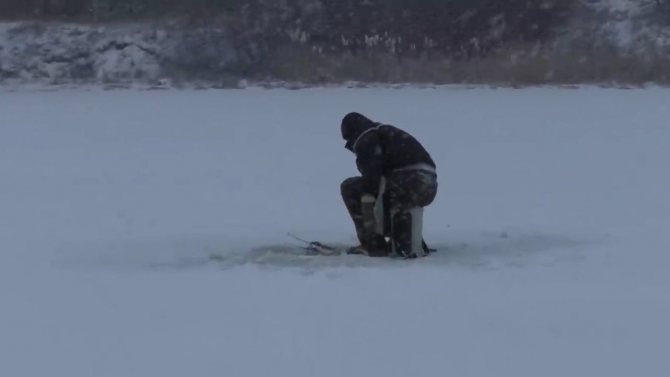
This way you freeze much less.
2. Having drilled a hole, you need to “protect” it - cover it on the leeward side with a thick layer of snow.
3. During fishing, water often leaks out of the hole.

To avoid sitting in a puddle, trample your feet a little in the area of the spill. Then the snow will be compressed and quickly turn into ice.
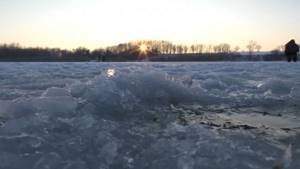
4. If fishing is carried out with small fishing rods, there is a danger that your potential prey will drag the tackle into the hole, under the ice. Accordingly, it becomes difficult to go anywhere.
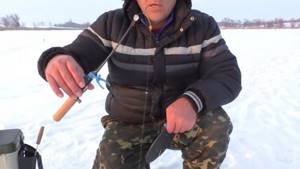
To safely leave such a fishing rod, use the circle from the rod. Simply place it over the hole of the hole and pass the fishing line through the cutout in it.
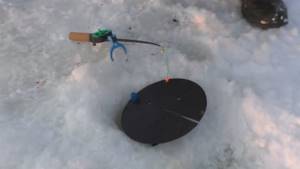
This simple technique will allow you to leave the fishing spot at any time without fear that the fish will “steal” the tackle.
5. Winter fish need to be fed. But this must be done in such a way as to only tease the appetite of underwater inhabitants and prevent them from overeating.
6. The correct choice of place for a breakout is one of the important factors of successful fishing. You need to choose an area of ice in the reservoir that does not have a large number of drilled holes nearby.
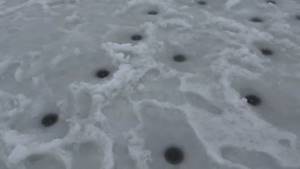
If there are too many holes, the fish will most likely leave such a place.
II. Tricks for using an ice drill
1. In the process of breaking holes, the ice drill is often covered with ice. It is especially unpleasant when ice build-ups form at the junction of the upper and lower parts of the instrument.
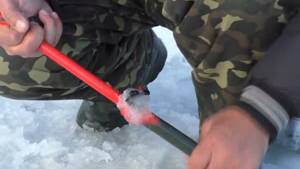
If such a nuisance occurs and the screw of the folding mechanism binds the ice, preventing you from folding the ice screw, you should not try to knock it down with any improvised objects. You just need to lower it into the hole for a while. The water in it, as is known, is above zero temperature, so the ice will quickly melt and release the screw connection.
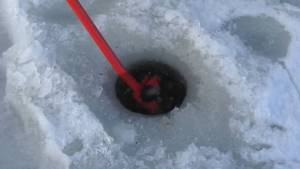
After such a simple operation, unscrewing and assembling the ice auger will not be difficult.
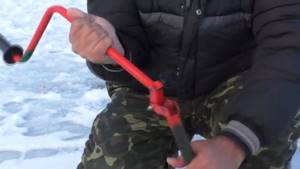
There is another way to get rid of ice that has formed outside or inside the folding mechanism of the ice auger. If you need to leave, but you can’t put away the ice screw, use the leftover tea from the thermos. Hot liquid is perfect for emergency defrosting.
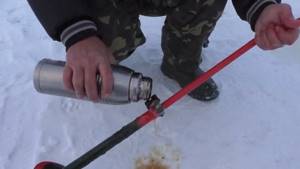
Even a little hot or warm water can solve this problem. Pour the remaining liquid from the thermos onto the problem area and the ice will melt, freeing the connecting screw.

Now you can unscrew the ice screw without much effort. If the drink was sweet, do not forget to rinse and dry the connecting screw and the parts of the ice ax that were poured with tea at home.
2. Every fisherman is faced with the need to replace ice ax knives. The most common reason for their dullness is contact with bottom soil (when holes are made in an area of a reservoir with shallow depth). In this case, grains of sand, small pebbles and other particles very quickly deprive even high-quality and expensive knives of their original sharpness.
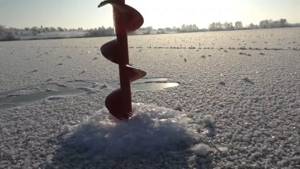
The process of replacing ice ax blades is not difficult at all. To do this, you only need a Phillips screwdriver and a new set of knives.
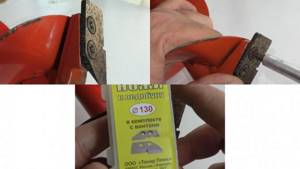
However, there is one trick. To prevent the threaded connections from sticking in the future, wrap the threads of the FUM fastening screws with tape used in plumbing work for sealing.
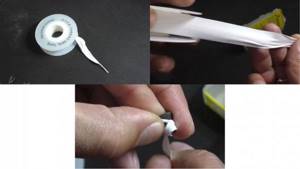
Another advantage of wrapping the threads of screws with FUM tape is that it acts as an additional sealant for the connection, so with it, spontaneous unscrewing of the fasteners is almost impossible.
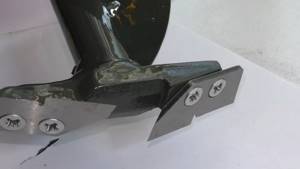
You just need to remember that FUM tape is a disposable item. After the connecting screws are unscrewed, they will need to be re-wound.
III. Tips for drinking tea while ice fishing
A thermos with tea is an important and mandatory piece of equipment for everyone who is interested in both summer and winter fishing. You need to prepare tea immediately before going out, pouring the finished drink into a heated thermos (to do this, pour a little boiling water into it, and pour it out after a couple of minutes) - this way it will stay hot longer.
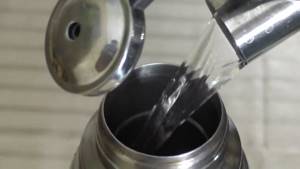
Models with simple screw-on lids retain heat best, while lids with buttons are the worst. In addition, size is also important: large volume thermoses retain heat longer.
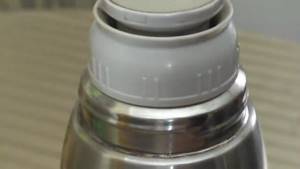
In winter - in contrast to the summer rule “drink as often as possible, but in small portions” - you should adhere to a different strategy: during the entire fishing trip (the road does not count), you should have one or two tea parties on the reservoir.

The logic here is simple: if you often open a thermos in the cold, the tea will cool down very quickly. One or two teas at a low temperature is enough to drink really hot tea and really warm up. But after the third and subsequent opening of the thermos, there will most likely be just warm water left in it, which will not help in any way in the cold.
That's all.
Thanks for your attention and happy biting! Source
Tricks of fishing with a fishing rod: relieve your hands
Using an ordinary float rod or feeder differs from using a spinning rod in that in the first case you have to sit in one place for a long time waiting for a bite. In just a day, even a light rod can stretch your arms a lot, and the pain in them then persists for a long time. To avoid this, it’s not a sin to use suitable fishing tricks - make a stand for your tackle with your own hands. To create it, you need aluminum rods of at least 5 mm thickness. Instructions with pictures are here.
The subtleties of fishing: what bites and what bites
Every man periodically thinks about going fishing. Some have been with their fathers or grandfathers since childhood, and now they are just waiting for this moment in life to relax, while catching a lot of fish to take home. And it doesn’t matter at all what period it is: summer or cold winter season.
Before going fishing, every decent angler thinks about what is worth catching fish and what it will be like: size, type, etc. Let's look at what the fishing process is like. Since ancient times, people have caught fish for food or to open shops, that is, to sell. Fishing was done in all sorts of ways, mainly with everyday objects, trying to stun the fish with a stone or a wooden stick, a wicker net, and even with bare hands.
We can say that in the old days they fished out of necessity, but now fishing is one of the types of recreation, tourism, and for some, it is even a way of life. The world has become more modern and multifaceted, so fishing has become a privilege not only for men, but also for some women. The number of fish caught may vary depending on the experience of the fisherman, bait, various groundbaits and the place where the fish were caught.
The first thing you should do when going fishing is to choose fishing gear. There are various fishing accessories: fishing rod, net, spinning rod and others. When purchasing, you should choose high-quality and durable products. In fishing, for example, you should pay attention to the size and material of the rod, hooks, reel (short or long range), weight and type of float, etc.
Next, you need to choose the right equipment, or rather clothes, in which you can go fishing. For the summer season, it is better to choose something lighter, but closed, because where there are fish, there are mosquitoes. In winter, wear comfortable, practical clothes, and be sure to be insulated enough to avoid frostbite during a long fishing process.
Also interesting: The Fisherman's Wife
Next in order is the choice of bait. This is a very important and responsible matter, on which the future catch will depend. There are several types of bait: natural, grain, purchased. Natural baits include crawlers (that is, earthworms), slugs, small mollusks and shrimp, ant larvae, and chafers.
Literally any fish can be caught with an earthworm. Therefore, it is one of the most popular methods used in fishing. And storing such bait is quite simple: you need to put them in damp soil, while covering them with a piece of tarpaulin, and feed them with pieces of vegetables. Bream, chub, roach, crucian carp, eel, perch, etc. are caught with a worm.
Chub are mainly caught using slugs, and then only in the summer. The extraction and storage of slugs is problematic; they can only be found in the early morning when there is dew, and they also do not tolerate direct sunlight and heat. Various fish are caught using larvae, shrimp, and shellfish: from rudd to trout.
Grain-based, store-bought baits are also one of the most common methods of baiting fish. There are many advantages of using them, for example, you can buy grain bait or make it yourself. Their cost is quite low, which is why they are in demand. Storing such baits is simple and long-term. And the fish are caught quickly using grain bait. Carp, grass carp, bream, and rudd love the grain. They easily peck and digest this bait.
Grain baits can contain nuts, millet, buckwheat, peas, poppy seeds, oats, wheat and other crops. As can be seen from all of the above, when assessing the expected catch, you should pay attention to the fishing spot, the fish living there, the correct stringing of the bait, as well as the experience and patience of the fisherman.
Goltsova. N
Category: Tips for fisherman
Tricks of spring fishing: choice of gear and location
In the spring, it is necessary to go to your favorite body of water after its level has dropped to normal and the water has become transparent. The greatest likelihood of finding large specimens will be at shallow depths, near holes, in the upper reaches, at a bend in the riverbed. When the potential prey has already begun its pre-spawning feast, it will begin to use various gear. The fishing line should be approximately 0.12 mm thick, the sinkers should be selected to match the color of the bottom, the float should be teardrop-shaped with a long keel, and in areas with strong currents – in the form of a ball.
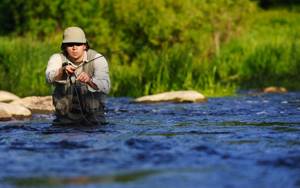
Ride and its design
Fishing on the current pays off in the dead of winter, when the water area loses the optimal level of oxygen and underwater inhabitants begin to suffocate. A strong flow of water is more saturated with oxygen, but in such places the ice is less safe.
For downstream fishing, powerful winter rods with low-flexibility whips are used. A soft whip will not cut through the fish, bending under the pressure of the sinker and the flow of water. Also, many models are equipped with a transverse bar so that the fishing rod does not go into the hole during a sharp bite. For equipment, take a fairly thick main line, up to 0.2 millimeters. The diameter of the leash remains the same, its range is within 0.1-12 millimeters.
For equipment you will need:
- round lead sinker 10-20 grams;
- plastic bead;
- reliable swivel (it is better to use an American one);
- leash with two hooks.
Read: Important features and subtleties of ice fishing
The sinker is placed on the main line, so there can be a distance of 1-2 meters between the lead and the nozzle. The principle of fishing is to roll a load along the bottom, due to which the bait plays. Thanks to the through hole in the lead, every bite is transmitted to the nod. When the white fish is active, the length of the leash is reduced, and the same is done in cases where the prey swallows the hook too deeply.
The pokatok has an amazing signaling device, consisting of a spring and a large brightly colored bead. The nod perfectly holds the sinker on the bottom, creates the correct line tension and reacts when the fish touches the bait. Thanks to the large elements, it can be seen from afar, which is especially important on large bodies of water.
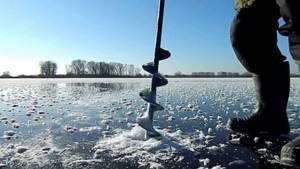
All sorts of fishing tricks: preventing hooks from rusting
Troubles with the appearance of rust on your favorite fishing equipment can occur at an unexpected moment, greatly spoiling your mood. To prevent such an undesirable phenomenon, some experienced fishermen use the following. A layer of foam rubber is glued to the bottom of the container used to store hooks, which is irrigated quite generously with vegetable oil. If it is fragrant, fishing will be more successful: these fishing tricks will allow you to attract more crucian carp. More important is the fact that the hooks will no longer become covered with rust.
Back Next
The influence of weather on the bite
Water temperature
- It is better to catch salmon at 12-18°C, and cyprinids at 23-28°C.
- A decrease in temperature after prolonged heat helps to improve the bite.
- Sudden changes in temperature lead to minimal bite for several days.
- A gradual increase in temperature, tending to a normal level, promotes the best fishing.
Weather
- The scorching sun scares away the fish.
- During hot weather, the most optimal time for fishing is early morning and late evening.
- Increased atmospheric pressure and cloudiness provide the best catch.
- If the sky is overcast, it’s a bad catch.
- Warm, uniform and not heavy rain ensures good fishing.
- During cold rain, it is better to stay home.
- Successful fishing is possible before and after a thunderstorm.
- Strong winds in any direction are not conducive to favorable fishing.
- The new moon is the most optimal period for going fishing, unlike the full moon.


